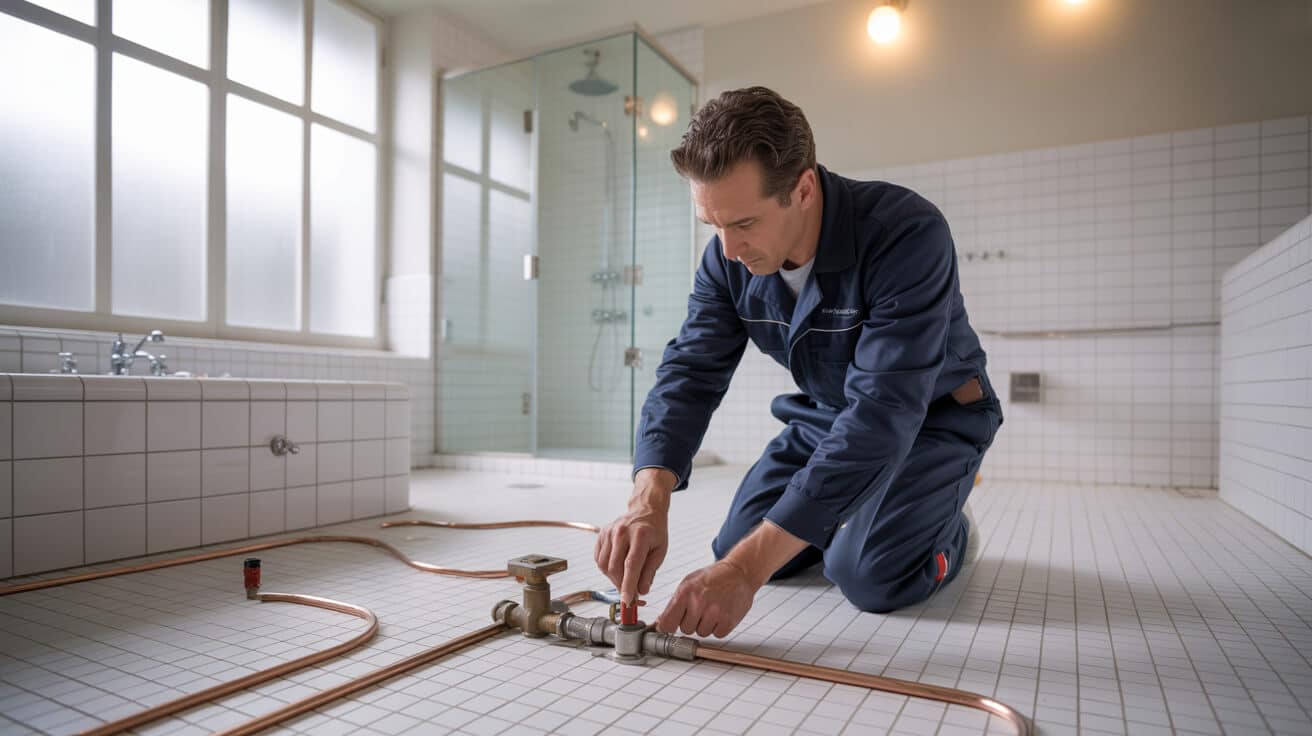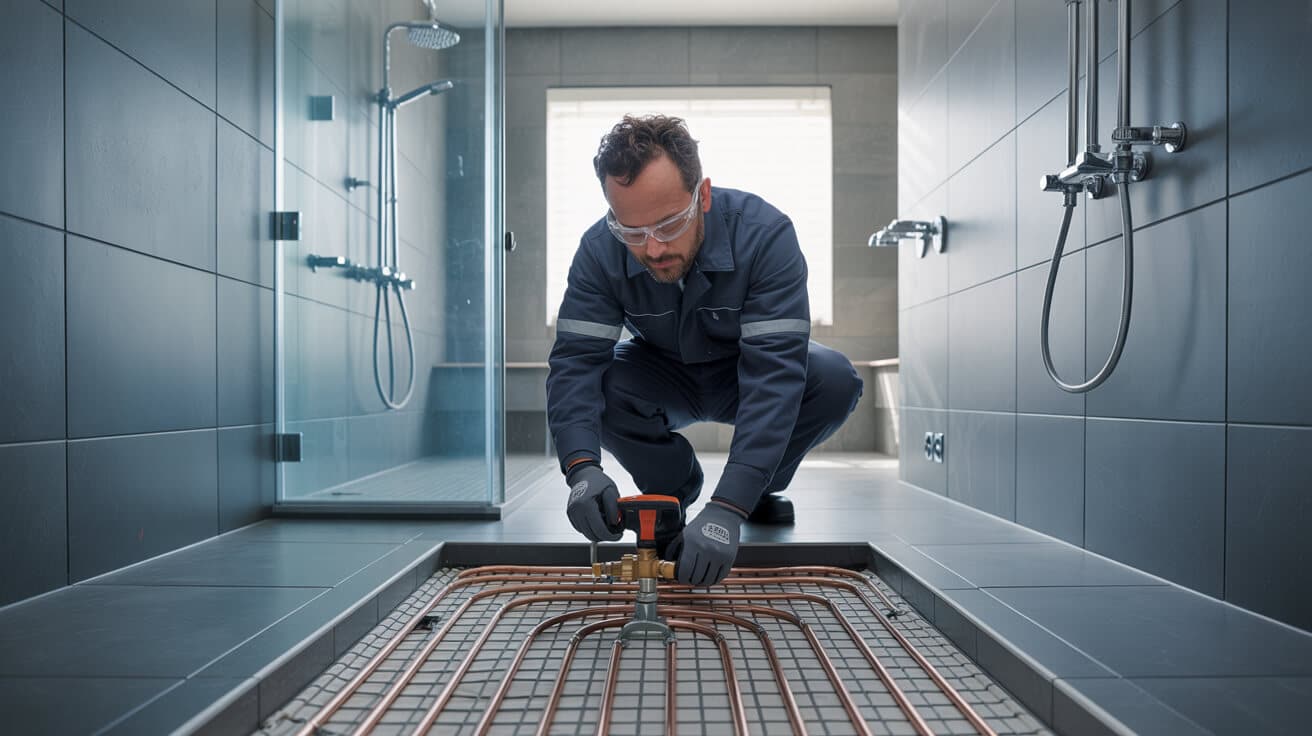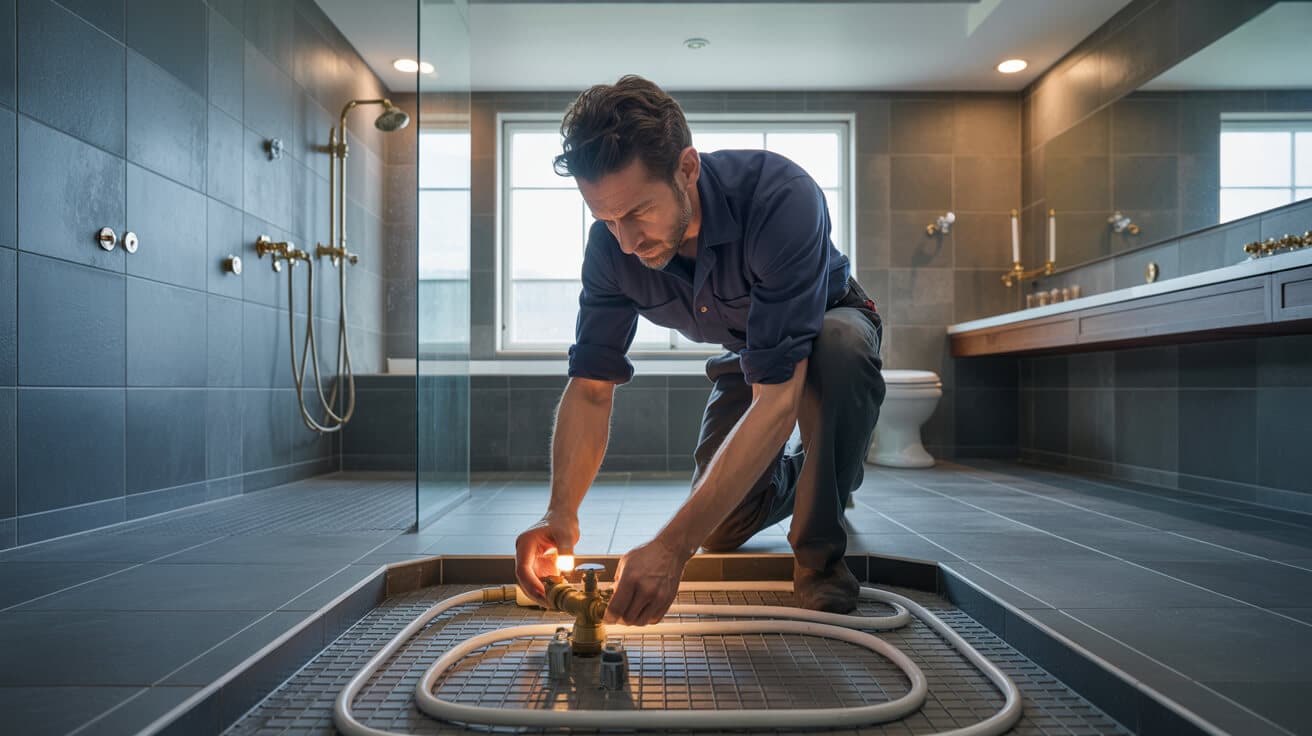Professionally accredited engineers in plumbing and heating oversee every system phase—from initial site survey and specification through installation, commissioning, and handover—adhering to strict codes, material certifications, and procedural best practices. By engaging only qualified engineers, you assert control over health and safety outcomes, secure insurance compatibility, and meet all legal requirements, such as landlord, letting, and facilities management regulations. Service providers, such as Plumbers 4U, set internal benchmarks for recruitment, upskilling, and continued compliance, refining the safeguards that underpin critical water, heating, and drainage infrastructure across all property classes.
A qualified instal encompasses much more than simple connection of pipes or appliances. The engineer’s workflow is defined by client engagement, risk assessment, integrated building system awareness, and an unbroken chain of documentation—including test records, compliance certificates, and warranty activation. Within a high-compliance environment, your company’s future insurability, tenant liability, and operational security depend on this rigour. Brand confidence emerges through transparent reporting, scheduled aftercare, and response protocols, shaping your experience of reliable service and future-proofed asset management.
Etymology and name origin
The composite term “qualified engineer” in the plumbing and heating context traces to British guilds and regulatory authorities standardising trade delineations. “Engineer” reflects a progression from hand-skills to a formally examined, technologically adept vocation. The descriptor “qualified” is reserved for those holding formal educational awards—most often National Vocational Qualifications (NVQ), City & Guilds, or Building Engineering Services Certification. Regional nomenclature varies; in North America, “mechanical contractor” may supersede “engineer” for legal purposes, while “installer” and “fitter” denote tiered responsibilities or certification levels within your organisation or service provider.
Qualifying status is renewed through compulsory Continuing Professional Development (CPD), re-examination, or membership in industry bodies, all of which reinforce your assurance that the operative’s skills and legal scope remain current.
Overview / context
Qualified plumbing installation is positioned at the junction of water safety, building control, public health, and the evolution of modern asset management. Critical systems—ranging from potable water supply to pressurised hot water storage and central heating—require meticulous design, integration, and inspection at all building stages. Industry best practice recognises that even minor errors in installation can result in severe property damage, contamination, Legionella risk, or regulatory noncompliance, directly impacting your asset’s performance and liability profile.
Within the property management, development, and facilities sectors, you increasingly confront an intricate compliance landscape spanning planning consent, building and gas safety regulations, and sustainability mandates. Specialist companies such as Plumbers 4U respond to this complexity by embedding standards not only in engineering but through client-facing systems for quotation, work documentation, survey upkeep, and aftercare. You benefit from a holistic approach that values technical integrity, legal risk reduction, and tenant or occupant welfare.
As new materials, jointing systems, and smart controls proliferate, your expectations for clarity, accountability, and future serviceability become defining criteria for the qualified engineer’s role. The context extends beyond the visible product to include backend procedural discipline and systematic modernization.
History
Origins and early regulation
Historically, plumbing was the preserve of artisans organised by local guilds, operating with little consistent oversight. The urban expansion and subsequent public health crises of the nineteenth century precipitated the establishment of sanitation codes, the expansion of municipal water infrastructure, and the first proto-regulations on waste removal and potable supply. Craft traditions converged with statutory requirements—driving the introduction of formal apprenticeship, skill assessment, and early licencing.
Evolution of installation standards
From the late twentieth century, the surge in building complexity, the rise of mass housing, and the spread of central heating created demand for more scalable, repeatable standards. Professional organisations emerged to define and enforce technical normativity, including the Institute of Plumbing and Building Engineering Services—now directly involved in shaping regulations. The Gas Safe Register and WRAS were born of fatal incidents and water contamination scares, tightening the boundaries of allowable work and shifting certification from a marker of proficiency to a legal obligation.
Contemporary developments
Today, the industry synthesises tradition and innovation, emphasising energy efficiency, eco-materials, and risk-managed mechanical systems. G3 certification for unvented cylinders, public registers for Gas Safe operatives, and measurable performance benchmarks now underpin your legal, insurance, and compliance obligations. Digital documentation, asset management integration, and customer experience monitoring carry qualified installation into the era of smart property.

Concept / description
Qualified installation begins with a comprehensive survey and risk analysis tailored to your property’s unique demand profile. Engineers assess supply pressures, water quality, structural access, and compatibility with prior works or other building services (such as electrical or HVAC). Pipework routing is calculated for flow balance, heat loss, and logistical constraints, with primary isolation valves, expansion vessels, and pressure-limiting devices specified according to installation class.
The build phase breaks into “first fix” (hidden mechanical work) and “second fix” (visible set-outs and appliance connection), ensuring maintainability and compliance throughout. Minor deviations at either phase are logged and risk-mitigated in situ, with your knowledge of process progression tracked via digital job sheets and photos. Each major step—drainage test, air or water pressure test, thermal balancing, chemical dosing—corresponds to checklist sign-off, benchmarking, or legal notification where required.
Operational handover involves client demonstration, data-lodgement with relevant authorities, and provision of materials such as Operations & Maintenance (O&M) manuals and digital certification packs. This formalises the safe, efficient, and insurable performance envelope of your system and establishes the record against which future maintenance and warranty activity operate.
Functionality / purpose / applications
Properly credentialed installations afford you measurable benefits:
- Regulatory compliance: Guaranteed alignment with statutory requirements, minimising risk of council action, insurance claim denial, or legal suits resulting from nonconformity.
- Performance and reliability: Systems operate as designed, with certified engineers resolving latent complications before they become operational failures. Homeowners and site managers gain confidence in supply, heating, drainage, and occupancy hygiene.
- Asset value protection and enhancement: Documentation provides legal traceability, enhances sale prospects, and expedites asset transfer or refinancing.
- Health and safety: Prioritisation of contamination control (crossflow/backflow), Legionella prevention, and gas safety.
- Tenant and user assurance: For landlords or property managers, you streamline compliance with standards such as the Housing Health and Safety Rating System (HHSRS) or Energy Performance Certificate (EPC) obligations.
Typical applications span:
- New housing, retrofits, and social or supported accommodation
- Public buildings (schools, healthcare)
- Hospitality and leisure facilities
- Industrial complexes with critical process water, effluent, or HVAC overlays
Classifications / types / variants
Installation projects are generally classified as follows:
- Residential systems: Single dwellings, apartments, conversions—incorporating boiler swaps, whole-house repiping, shower upgrades, or underfloor heating.
- Commercial systems: Schools, offices, housing blocks requiring higher load capacity, advanced control zoning, heightened documentation, and minimum redundancy. Specialist water quality or pressure-boosted services may be specified.
- Industrial/process systems: Factories, warehouses, or plants with process water, effluent, or fire suppression overlays demanding stricter standards and often third-party inspection.
- Special installations: unvented cylinder systems; renewable-powered hot water or heating; greywater and rainwater harvesting networks; disabled adaptation bathrooms; and commercial plant rooms.
System variants within each class relate to chosen materials (copper, PEX, MDPE), pressure regimes (gravity versus pressurised), energy source (gas, electric, renewable), and control sophistication (from analogue thermostats to programmable multi-zone smart controllers).
Systems / tools / methodologies
Core materials and jointing systems
Installations leverage standardised WRAS-approved materials:
- Pipes: Copper (Type L/M), cross-linked polyethylene (PEX), polybutylene (PB), and MDPE for mains.
- Valves and connectors: Isolation, check, zone, and thermostatic mixing valves (TMVs).
- Jointing: Solder, press-fit/crimp, push-fit, compression, solvent weld for waste lines.
Engineers calibrate material claims against manufacturer warranty and specified application (e.g., temperature, pressure, chemical compatibility).
Standard and specialist tools
Core tools encompass:
- Pipe cutters, benders, press-fit tools for precise installation
- Digital pressure and temperature sensors for testing/commissioning
- Thermal imagers and endoscopes for diagnostic or concealed works
- Specialised spanners (manifold, boiler, valve), pipe vice setups, electronic metres
All tools are maintained and regularly checked for compliance, safeguarding your installation’s technical integrity.
Documentation, installation drawings, and handover manuals
Installers maintain:
- Installation drawings: Detailing pipe runs, isolation points, control locations, measuring tolerances for compliance.
- Risk assessments/method statements: Addressing both installer and occupant safety.
- O&M manuals: For ongoing support, warranty validation, and asset management.
- Certification packs: CP12 (gas), G3 (unvented), Benchmark logs, WaterSafe/WRAS declarations.
Your records enable verifiable compliance for council, insurance, or resale processes.

Stakeholders / entities involved
Qualified installations pivot on collaboration among:
- Engineers: Certified, trained professionals executing work on site.
- Companies: Employer legal responsibility, insurance cover, training investment, and end-to-end client communication (notably prioritised by service responders such as Plumbers 4U).
- Regulatory bodies: Gas Safe Register, WRAS, G3 assessors, WaterSafe, and Building Control manage registration, audit, and enforcement.
- Clients: Homeowners, property managers, landlords, developers, and facilities managers who require compliant systems protecting their asset, liability, and user well-being.
- Manufacturers and suppliers: Guarantee product compliance only when installed by recognised trade professionals.
Integrated project management—and maximised value for your business—arises only when all parties coordinate signalling, documentation, and control.
Legal, regulatory, and ethical considerations
Building and water regulations
Legislation relevant to qualified plumbing installation includes:
- UK Building Regulations: Part G (sanitation, hot water), Part H (drainage), Part L (energy efficiency), Part P (electrical safety).
- Water Supply (Water Fittings) Regulations 1999: Stipulate design, installation, and material compliance to guard against contamination.
- Gas, health, and safety provisions: Including Gas Safe Register requirements, CDM (Construction, Design and Management), COSHH for chemical use, and NICEIC for any electrical overlap.
Practical application means only holders of relevant badges or numbers may lawfully execute or sign off on works in your property. Enforcement bodies conduct random site checks and respond to complaints or incident reports.
Certificates, inspection, and dispute management
System sign-off involves third-party-validated certificates and fully auditable job records:
- CP12: Gas safety; renewed annually or at change of tenancy.
- G3: Unvented hot water systems; scrutinised for discharge, temperature, and pressure controls.
- Benchmark logbooks: Provide warranty and assurance for boiler and heating plant instals.
- O&M manuals: Formally required for new build or significant projects.
Dispute resolution mechanisms rely on complete, timely documentation. Your exposure to dispute cost or risk is minimised by engaging credentialed providers with strong documentation and transparent policies.
Professional and client ethics
Trade reputation depends on transparency, fair treatment, and prompt complaint handling. Engineers are obligated to be honest regarding scope, cost, and technical limitations, while clients are expected to facilitate necessary access, decision-making, and compliance with contract terms.
Performance metrics / data / measurements
Every qualified plumbing installation is evaluated with objective and auditable metrics:
- Testing: Systems are subjected to pressure, leak, and functional tests to prescribed tolerances.
- Commissioning and sign-off: Tabulated values for flow rates, temperatures, and system retention verify compliance against design specification.
- Maintenance compliance: Logged servicing visits, CP12 renewals, and statutory inspections verify continuous conformity and warranty status.
- Key performance indicators: Reliability, reduction in callouts/resolved defects, energy consumption, and user/documented satisfaction.
Clients—commercial or residential—may access or request job information at any stage, ensuring accountability and transparency.
Challenges / barriers / limitations
Skills and operational constraints
Ongoing skills shortages challenge industry capacity. Competency gaps reveal themselves in areas such as new materials, digital system integration, or regulatory changes. Employers must maintain robust CPD and cross-training schedules to prepare your jobsite for regulatory scrutiny and technical failure.
Legacy systems and retrofit difficulties
Older systems may lack compatibility with modern components or codes, complicating integration or upgrade. Limitations in access (especially in tenanted or listed properties) further hinder compliant installation, sometimes necessitating detailed negotiation between engineer and your asset manager.
Economic and policy factors
Price sensitivity, grant structures, and compliance costs affect both scope and technical ambition. Clients must balance upfront investment with downstream savings or risk. For occupants, the tension between quick repair and documentation diligence presents ongoing friction.
Paperwork and regulatory complexity
Expanding documentary requirements, fragmented oversight responsibilities, and accelerated regulatory updates burden engineers and companies alike. Your ability to evidence compliance shapes insurance, asset value, and legislative standing.
Impact / influence / legacy
Plumbing installation, when delivered by qualified engineers, positively reshapes both individual and communal living standards:
- Public health impact: Safeguards water quality, prevents supply or drainage issues, and reduces the incidence of Legionella or carbon monoxide incidents.
- Asset value: Protects investment, assure resale, and expedites asset management transitions.
- Market discipline and sectoral trust: Drives reputation, encourages innovation, and disseminates higher benchmarks for the profession.
Brand-anchored companies such as Plumbers 4U demonstrate that procedural integrity, client communication, and comprehensive certification offer long-term competitive advantage.
Future directions, cultural relevance, and design discourse
Several vectors are expected to define the future significance of qualified engineer plumbing installation:
- Sustainability and decarbonization: Growth in demand for renewable system integration, water recycling, and low-temperature heating.
- Digitalization: Expansion of digital documentation, compliance tracking, and property data management—elevating user control over lifetime system performance.
- Transformative professionalism: Intensified skill investments, new apprenticeship models, and expanding risk management frameworks support rising policy scrutiny and client demand.
- Cultural revaluation: Greater public recognition of the sector’s role in safeguarding environmental health, supporting social infrastructure, and stewarding property as a central facet of human flourishing.
The continued convergence of technical, policy, and cultural priorities assures that qualified, standards-driven installation remains at the foundation of personal, commercial, and societal wellbeing.

